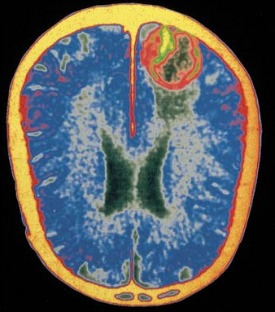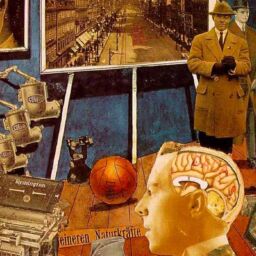
Type for Non-Normal Populations
Ethical “Off-Label” Uses of Type
Ann Holm, April 6, 2016
What is your assessment philosophy? Do you agree or disagree that:
- Assessments need to be administered to the target audience and only as directed by the manual?
- An incomplete assessment is of no value?
- You should never make your own subjective type assessment of a client, even if it is based on the principles and concepts of a valid assessment instrument?

If you disagreed, at least to some degree, you are willing to explore the “off-label” uses of an assessment tool. What do I mean by off-label? In the pharmaceutical industry, off-label refers to the use of pharmaceutical drugs for an unapproved indication or in an unapproved age group, dosage, or route of administration. In other words, given what is known about a certain drug, certain extrapolations are being made to explore other uses of the drug based on known principles. Proper off-label use is not random and yet it is also understood that limited data is available to say for certain whether something is effective or ultimately safe.
The MBTI® instrument, for example, was designed for describing the “healthy personality” (Myers & Myers, 1998, p. xv), and certification trainers caution us about the dangers of applying it to those who are outside the norm. But in the realm of assessments, there is potential to go off-label in order to gather information about a client that might be useful even though the client does not fall into the target population, the normal population. There are many potential benefits to the client and some ethical guidelines can be followed to reduce risk.
The MBTI® assessment identifies preferences, which are essentially indicators of how we use perception and judgment. We have a preferred perceiving and judging function. When these are working well together, it is said we are functioning well in our type. Just beyond the boundaries of “normal” are perception and judgment functions that have nicked the banks of the river that is our mind. According to psychiatrist Daniel Siegel:
When perception and judgment are out of balance, here is potential for chaos (too much stimuli/too many thoughts) or rigidity (being closed to new information). When the balance and integration of these functions is present, the mind flows like a river. (2010, p. 51)
Where does “normal” end and “not normal” begin? Sometimes it isn’t obvious, especially when individuals are just outside of the boundaries of normal. Consider mild Asperger’s Syndrome or attention deficit hyperactivity disorder (ADHD). Can these individuals benefit from the Jungian principles that underpin the MBTI or other type tools and instruments?
Case Studies Involving Non-Normal Clients
Consider the following cases where type principles were used to craft effective strategies for optimal function:

I was brought in to work with this client just as I was transitioning from coaching brain-injured clients in their homes (as a speech pathologist) to my current role as a personal development coach. I had a foot in each pond, so to speak, so I decided to experiment with my new insights and skills to see if type principles could help this patient. This all came about after we took initial steps to improve her memory problem.
When memory has been compromised, there are many ways to help a client, especially by using outside structures, devices, and cues. A few contemporary options include schedule books, iPads, diaries, and post-it notes. My initial strategy was to suggest post-it notes. In my mind, they were colorful and they could be placed throughout the house as memory cues.
My brilliant idea was met with a flat-out “no.” Her objection was that this would clutter up her home. She wanted a leather-bound book instead. I was certain that this was ill-advised, mainly because I thought she would misplace it. As it turned out, this was the perfect solution for her. She was attracted to the neatness and order of this solution so she always knew where her book was. Post-it notes would have been a distraction. Soon afterward, I became curious about her preferences so I did a cursory type assessment and discovered she likely had ESFJ preferences. How we approached treatment options from then on was affected, at least to some degree, by her preference for attractive order. In my subsequent visits, any worksheets or tasks were presented in an attractive folder. Even the way I dressed had an impact. She had mentioned that she didn’t want to work with her physical therapist because she dressed “like a slob.” We could argue that she was missing the point of physical therapy by noticing this detail. However, this made a difference to her as the client.
Case 2: A 24-year-old engineer had a known diagnosis of Asperger’s Syndrome. Those with Asperger’s Syndrome, which is on the mild end of the autism spectrum, are part of a population that is contra-indicated as appropriate for the MBTI. My rationale for using the MBTI was that it would be a non-judgmental way of articulating preferred ways of approaching life, demonstrating how others have different preferences, and even suggesting pathways toward growth. Going “off label,” I assessed the client via Form M and verified ISTJ preferences. In our discussion, my client learned that:
- ISTJs have a natural strength for details (normalizing some of the behavior associated with this disorder).
- ISTJs learn best by practice: “I practice certain social things and I know that’s how I get better at it.”
- There is a natural preference for structure in ISTJs. Through writing with the non-dominant hand, he learned that others might prefer less structure.
Case 3: The next client was a singer who verified INFP preferences. In the past, he wondered if he might have ADHD as he reported difficulty staying focused, on time, and organized. Upon seeing a doctor a couple of years before, he had been prescribed Adderall and indeed his focus improved with this medicine. However, he also found that his creativity was compromised, among other side effects, so he stopped taking the medication.
As he learned more about his type, he discovered the impact of having auxiliary extraverted intuition (Ne). He learned that his preferences made him highly adaptable and creative. At the same time, he also learned that he could use strategies to overcome some of his blind spots that were at least in part the result of non-preferred functions. No excuses were made for ineffective behavior. At the same time, understanding the nature of his personality did help us collaborate on effective strategies for self-development. These included:
- Simplifying his external structures to stay organized: He had too many files, labels, systems, and sub-systems, which were created in the moment but were ultimately difficult to trace after the fact.
- Decreasing visual clutter in his office by rearranging his room to encourage an atmosphere conducive to focusing.
- Using a timer to ensure that he stayed on task and did not switch over to something else.
Ethical Guidelines for “Off-Label” Use of Assessment Tools

Do:
- Thoroughly understand the theory behind the instrument. What was it intended to explore and what does it not do (e.g., suggest levels of neuroticism)?
- Make it clear that your findings are likely to be valuable but limited because the assessment is “off-label.”
- Use a variety of well-tested resources and tools to assess type, e.g., a traditional questionnaire such as an MBTI or a resource like a card sort.
- Consider their current level of language and cognition: What must you modify for this client?
- Use actual or hypothesized preferences to create effective strategies to meet the goal. Test your hypothesis with concrete tasks to prove or disprove your hunch.
- Involve family or friends in the assessment discussion who may know the client’s tendencies.
- Collaborate with other individuals regarding your findings. This would include teachers, physicians, and others.
- Be very clear that this assessment is not a diagnosis. When you are providing services for the non-normal population, you are likely to run into a tendency toward labels and diagnoses. Hence, there may be a push to phrase your findings in a similar manner. Decline to use this language when reporting what you noticed.
Don’t:
- Push toward final type verification unless it is very clear. Stay curious and keep exploring instead.
- Struggle too much to identify which behavior is type-related and which is not. Since you are not providing a diagnosis or a label, you need not have that sorted out in order to plan effective strategies for personal improvement.
- Rely on one instrument or tool if something else works better. Some clients can take a full assessment while others might need a few simple exercises to explore type.
- Get into type arguments. You are using your theoretical knowledge of type and what seems to work best in the service of individual development. Know the strengths and limitations of your approaches.
When I think about using type instruments and tools with individuals who are outside of the “normal” population, I keep in mind what the goal is. If you are using type in a research-based project, clearly you need to stay within the traditional parameters of the instrument. Likewise, if you are using type as a data point in a formal assessment, you will want to stick to the protocol and make sure the client verifies his/her type using a robust procedure that will truly verify preferences. However, if you are looking for an improved way to serve the needs of your client, it can be highly beneficial to explore type. Leverage your curiosity and creativity and see if you can’t learn something new about your “non-normal” client by going off-label.
References
Siegel, D. (2010). The mindful therapist. New York, NY: W. W. Norton.
Myers, K. D. & Myers, P. B. (June 1998). Foreword. In Myers, I. B., McCaulley, M. H., Quenk, N. L., & Hammer, A. L. (Eds.), MBTI® manual: A guide to the development and use of the Myers-Briggs Type Indicator®. Mountain View, CA: CPP, Inc.
Images:
Andrzej Guttfeld, “The Interior,” 2002. Courtesy: Centre of Contemporary Art, Znaki Czasu, Poland.
Cross-section of brain with encephalitis.
Psychiatric medications.












This paper is so clear and practical. Some of its conclusions apply even to uses of the assessment with apparently normal populations, including especially clients whose type development and orientation has been strongly impacted by environmental pressures, leading to elements of what Jung called “falsification of type.” In such situations, to “stay curious and keep exploring” seems essential.